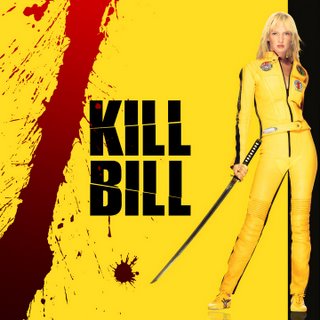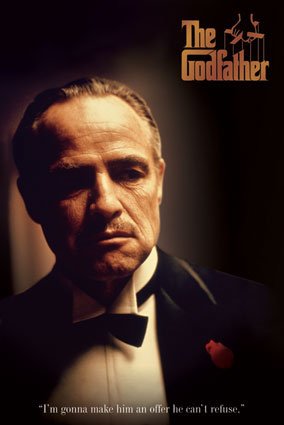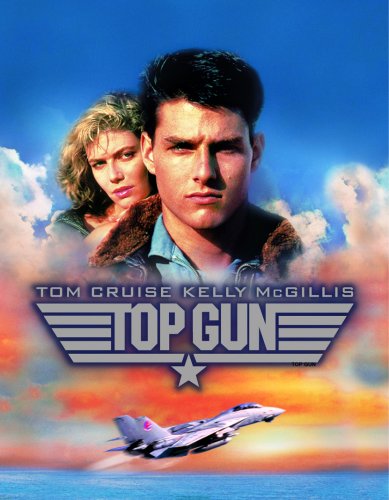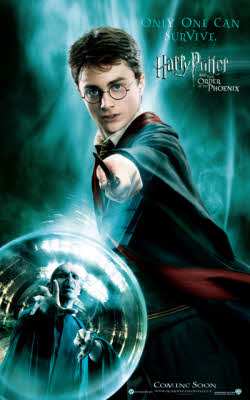by Srikanth Suresh Kumar
[box]Srikanth Suresh Kumar unravels the music behind movies, sharing his personal thoughts and some of his favourite tracks. For once, have music ringing in your ears with the help of words! Read on.[/box]The 50 – 60 odd gathered at the Valhalla lounge in south Bombay were waiting in anticipation to know the next song on the setlist for the night. The crowd had been treated to an eclectic mix of original compositions and some famous Zappa, Beatles and Hendrix numbers by Blackstratblues, the band performing that night. The chatter had grown louder, and it was just then that Warren Mendonsa, the lead guitarist, gave us a hint of the next song. He didn’t name the artist/title of the track though. He just mentioned that this was his current ringtone and started playing. The drums and the bass kicked in. Just 5 secs into the song, and the crowd went crazy! I asked my friend, isn’t this from the Pulp Fiction OST? He simply nodded in agreement, “Misirlou dude!”
 I have always wondered how certain tunes simply remain in your head long after the movie has finished. A genius in compiling excellent soundtracks for movies is maverick filmmaker Quentin Tarantino. How can one forget the beautiful Shoshanna in a dazzling red dress, her mood full of vengeance, just craving to eliminate the entire Nazi top bass by setting her cinema house on fire?. The scene became memorable owing to the background score: David Bowie’s Cat People with sarcastic lyrics like “putting out the fire with gasoline”. Tarantino has managed such gems time and again: Bullwinkle when John Travolta is driving his car under influence of cocaine, Uma Thurman dancing to Girl, you’ll be a woman soon, a Neil Diamond classic, George Baker’s Little Green Bag in Reservoir Dogs, Twisted Nerve by Bernard Herrmann played when the nurse prepares the wrong injection for a comatose Uma Thurman in Kill Bill – Vol 1, and Nancy Sinatra’s absolutely mild and melodious Bang Bang (My baby shot me down) at the start of the same movie, a song so serene that the audience would have no idea of the violence that lay ahead in the movie.
I have always wondered how certain tunes simply remain in your head long after the movie has finished. A genius in compiling excellent soundtracks for movies is maverick filmmaker Quentin Tarantino. How can one forget the beautiful Shoshanna in a dazzling red dress, her mood full of vengeance, just craving to eliminate the entire Nazi top bass by setting her cinema house on fire?. The scene became memorable owing to the background score: David Bowie’s Cat People with sarcastic lyrics like “putting out the fire with gasoline”. Tarantino has managed such gems time and again: Bullwinkle when John Travolta is driving his car under influence of cocaine, Uma Thurman dancing to Girl, you’ll be a woman soon, a Neil Diamond classic, George Baker’s Little Green Bag in Reservoir Dogs, Twisted Nerve by Bernard Herrmann played when the nurse prepares the wrong injection for a comatose Uma Thurman in Kill Bill – Vol 1, and Nancy Sinatra’s absolutely mild and melodious Bang Bang (My baby shot me down) at the start of the same movie, a song so serene that the audience would have no idea of the violence that lay ahead in the movie.
In many ways, I believe the journey of memorable background scores begins in 1961 when Bobby Darin composed the theme for Come September. I was fortunate enough to hear the Maharashtra Police brass band play this famous tune at a show a few days ago at Malabar Hill. Just goes to show how famous the melody is. Few years down Ennio Morricone composed the title tracks for Sergio Leone in the spaghetti western trilogy A Fistful of Dollars, For a Few Dollars More, and the Good, the Bad, and the Ugly. Even to this day, over 40 years later, these tunes are remembered in so many ringtones and playlists. Morricone with his orchestra would have had little idea what a massive impact these compositions would have on music lovers across so many generations. Morricone has given us many more wonderful compositions, most notable being the soundtracks of the Sicilian Clan (1969) and the somewhat funny score of My Name is Nobody (1973).
 The seventies began with Nino Rota creating magic for the movie of the century, The Godfather. Many cinema-loving souls have the Godfather theme somewhere in their music collection for sure. A true gem indeed considering the manner in which the music score so elegantly propels the story. His compositions enhanced the beauty of works of directors like Fellini and Francis Ford Copolla. Bill Conti was also special – with a memorable soundtrack for the Rocky series he made Sylvester Stallone a poster boy for the working class. Rocky climbing the steps of the Philadelphia Art Museum became an iconic scene owing to the epic tracks like Going the Distance and Gonna Fly Now. And then, towards the end of the seventies Saturday Night Fever happened. John Travolta became every teenage girl’s dream. Disco music and bombastic Bee Gee beats ruled the Billboard music charts. At about the same time, John Williams wrote the score for Star Wars series, which went on to become a landmark in background music history. It was performed by a massive 87 piece London Symphony Orchestra in 1977.
The seventies began with Nino Rota creating magic for the movie of the century, The Godfather. Many cinema-loving souls have the Godfather theme somewhere in their music collection for sure. A true gem indeed considering the manner in which the music score so elegantly propels the story. His compositions enhanced the beauty of works of directors like Fellini and Francis Ford Copolla. Bill Conti was also special – with a memorable soundtrack for the Rocky series he made Sylvester Stallone a poster boy for the working class. Rocky climbing the steps of the Philadelphia Art Museum became an iconic scene owing to the epic tracks like Going the Distance and Gonna Fly Now. And then, towards the end of the seventies Saturday Night Fever happened. John Travolta became every teenage girl’s dream. Disco music and bombastic Bee Gee beats ruled the Billboard music charts. At about the same time, John Williams wrote the score for Star Wars series, which went on to become a landmark in background music history. It was performed by a massive 87 piece London Symphony Orchestra in 1977.
In the early eighties, Evangelos Odysseas Papathanassiou (more popularly known as Vangelis), created the goose bump-raising Chariots of Fire soundtrack. He then went on to create evocative melodies in films like Blade Runner, Antarctica, Conquest of Paradise and in recent years the music for NASA’s Mission to Mars and Alexander. To call his music inspirational would be an understatement. His pieces have found their rightful places as anthems in Olympic games, advertisements and so many other live televised shows. From haunting ballads to orchestral uplifting scores (all scored by using synthesizers alone), Vangelis’s repertoire from the late 70s to the 90s continues to be mind fodder for music directors worldwide. Quite recently the majestic score from 1492: Conquest of Paradise was played before every match in the ICC Twenty20 and the 2011 World Cup.
Meanwhile, Giorgio Moroder was giving rise to synth-based electronic sound in movie soundtracks. Musicland, the underground studio in Munich, co-founded by him, was already a popular recording destination for legendary rock bands like the Rolling Stones, Deep Purple, Led Zeppelin and Queen for its quadrophonic consoles. Musicland played a significant role in allowing him to experiment with a variety of instruments most notably the MOOG synthesizers to good effect. He was awarded the Academy award for Best Original Score for Midnight Children in ‘78. His album E=MC² was released in 1979 as the first electronic live to digital album. Moroder’s best contribution though remains his score for Brian de Palma’s Scarface. Tony’s theme epitomized Tony Montana’s (Al Pacino) rise and fall so beautifully that it was fitting that this cult movie began and ended with this track.
 Harold Faltermeyer, a protégé of Moroder, was getting groomed to take over the mantle of techno pop from the former. First came the soundtrack for Beverly Hills Cop. The extremely famous Axel F soundtrack (not the Crazy frog version we know of) was a massive hit. Then came the movie that made Tom Cruise and Ray Ban aviators a household name. This movie had everything. Mean machines, young star cast, nice script, classic dialogues and numerous adrenalin gushing moments. Faltermayer just added excellent music score to this list. Moroder meanwhile earned an Academy for Best Original Song for writing Take My Breath Away played during the famous love scene in Top Gun. The background score of Guiseppe Tornatore’s 1989 Oscar winning movie Cinema Paradiso once again reminded one and all of Ennio Morricone’s greatness as a composer. The heart warming tale of life, nostalgia and love for cinema was well supported by a very emotional score.
Harold Faltermeyer, a protégé of Moroder, was getting groomed to take over the mantle of techno pop from the former. First came the soundtrack for Beverly Hills Cop. The extremely famous Axel F soundtrack (not the Crazy frog version we know of) was a massive hit. Then came the movie that made Tom Cruise and Ray Ban aviators a household name. This movie had everything. Mean machines, young star cast, nice script, classic dialogues and numerous adrenalin gushing moments. Faltermayer just added excellent music score to this list. Moroder meanwhile earned an Academy for Best Original Song for writing Take My Breath Away played during the famous love scene in Top Gun. The background score of Guiseppe Tornatore’s 1989 Oscar winning movie Cinema Paradiso once again reminded one and all of Ennio Morricone’s greatness as a composer. The heart warming tale of life, nostalgia and love for cinema was well supported by a very emotional score.
Many of us are familiar with images of an autistic Dustin Hoffmann walking behind Tom Cruise through a tree-lined avenue in the 1989 saga Rainman. Hans Zimmer used synthesizers mixed with steel drums for this movie’s track that proved to be a huge career turning point in his career. Hans Zimmer influenced the 90s as much as Harold F belonged to the 80s. In a way Harold’s works in the 80s were a prelude for more refined and modern synth music of the 90s. His style of composing heavily synthesized scores and ballads was taken up by many including Hans Zimmer who, in turn redefined scoring albeit using the same techniques but using modern technologies and infusing them with world music wherever required. Zimmer went on to achieve immense success in Lion King. The powerful background score for Ridley Scott’s epic Gladiator was another notable creation of Hans Zimmer. He claims it was heavily inspired by the works of Richard Wagner. Today, Zimmer is considered to be the father of integrating the electronic musical world with traditional orchestral arrangements.
Critically acclaimed director Christopher Nolan brought Hans Zimmer and James Newton Howard together for Batman Begins, The Dark Night and Inception. They ended up creating melodic brilliance that so perfectly accompanies the images and sounds of a Christopher Nolan thriller. Contemporary background music by the likes of James Newton Howard (I am a Legend, Blood Diamond) Thomas Newman (Scent of a Woman, Shawshank Redemption, American Beauty) and Howard Shore (The Lord of the Rings film trilogy) has continued to add flair to the movie it is composed for.
Music has always accompanied movies. Even silent movies of yore had music playing in the background be it an organ or a whole symphony orchestra. Actors are invariably the stars of any movie. But many a time it’s the music BEHIND the movie that makes an actor’s performance memorable.
With valuable inputs from Girish Nair.
[box]DID YOU KNOW? The post you just read is also a part of a PDF that can be downloaded! Don’t miss the colourful edition and also the chance of reading it all in one place! To download the June 2011 issue as PDF or to flip and read it like a magazine on the e-reader, please use the buttons below.[/box] [button link=”https://sparkthemagazine.com/wp-content/uploads/2011/06/Spark-June-2011.pdf” color=”purple”]Click here to download the June 2011 issue as a PDF[/button] [button link=”http://issuu.com/sparkeditor/docs/spark-june-2011?mode=embed&layout=http%3A%2F%2Fskin.issuu.com%2Fv%2Fcolor%2Flayout.xml&backgroundColor=000000&showFlipBtn=true” color=”green”]Click here to flip and read the June 2011 issue like a magazine[/button] [facebook]share[/facebook] [retweet]tweet[/retweet]




